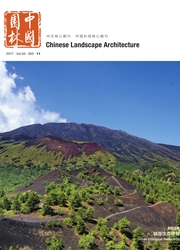

 中文摘要:
中文摘要:
城池作为古代城市防御设施与城市空间的界定物,在社会生活、城市意象与政治象征中发挥着重要作用。明清重庆城池形成了寓形山水、天人合一的形态和“九开八闭十七门,象天法地”的城门布局、功能耦合的城池空间等特征。其特征的形成一方面源于城市职能与山水地形耦合的结果,另一方面也是明清重庆制度文化、精神文化和人居文化持续发展推动的物质性体现。由于两方面的相互作用,明清时期重庆城池空间形态体现了内在空间逻辑的规定性和外在形态特征的地域性。
 英文摘要:
英文摘要:
As the defense facility of ancient city and the partition of urban space,city wall and moat is of great significance in social life,urban image and political symbol.During Ming and Qing Dynasties,the city wall and moat in Chongqing formed the shape of landscapeas"the unity of nature and human",the layout of city gates as"seventeen gates which nine opened and eight closed,following the law ofthe heaven and the earth",and the space with coupled functions,etc.On one hand,these characteristics came from the coupling of urbanfunctions and landscape topography;on the other hand,they are the material embodiment of continuous institutional,spiritual and habitatculture development.Due to the interaction of both aspects,the space morphology of Chongqing city wall and moat during Ming and QingDynasties reflects the prescriptive of inherent spatial logic as well as the regionalism of external morphological characteristics.
 同期刊论文项目
同期刊论文项目
 同项目期刊论文
同项目期刊论文
 期刊信息
期刊信息
